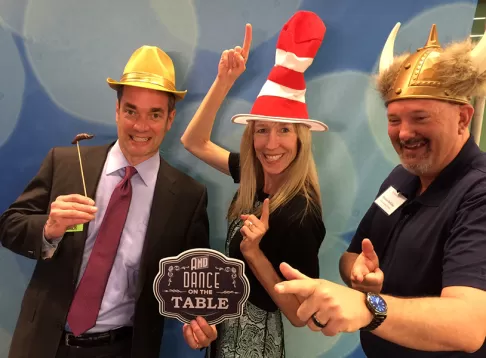We thought we’d shine a light on some women who have made significant contributions to our homes. Once you’ve read through these, please comment to let us know who we missed!
- We were surprised to find out that the first 100 percent solar-powered house was invented in 1947. Maria Telkes (1900-1995), a Hungarian-American scientist, invented the thermoelectric power generator, which provided heat for the Dover House, a wedge-shaped structure she conceived of with another woman, architect Eleanor Raymond. Treehugger.com shares that:
She designed a system relying on a phase-changing material, Glauber's Salt or the decahydrate of sodium sulfate, also known as sal mirabilis or miraculous salt. The project, which was supported by another woman, heiress Amanda Peabody, included “sun wall chemical heat storage” which used double glazing separated from a black metal sheet by an air cavity on the south face of the building.
- Patricia Billings is the inventor of Geobond®, a building material that is indestructible, fire-proof and non-toxic. Here’s what we learned from Women-Inventors.com:
Billings, a sculptor, initially sought to create a cement additive to prevent her sculptures from shattering in the 1970s. After years of experimenting, she finally achieved her goal of making an indestructible plaster. Soon after, she discovered the material was also amazingly resistant to heat – which opened the door to a larger number of applications. Because the Geobond® invention is non-toxic as well as indestructible and fire-proof, it is the world's first workable replacement for asbestos. While Billings has two patents on her work, she continues to keep the exact recipe of Geobond® a secret. The inventor and great-grandmother hopes to see her invention used to revolutionize the construction industry, and she even turned down millions of dollars from a company she thought would try to bury her new technology.
- If you feel secure in your home because of your alarm system, you have Marie Van Brittan Brown (1922-1999) to thank. This African-American nurse was concerned about safety when she was home alone in New York at odd hours. She realized she would feel more secure if she could see who was at her door, so she worked with her husband, Albert, an electrician, to invent the home security system, with a patent filed in 1966. AmericaComesAlive.com shares:
The camera could move up and down to take views through four separate peep holes. The top spot would reveal the identity of a tall person; the lowest one would show if a child was at the door. The other peepholes could capture any person between these two heights. A television monitor was placed in the Browns’ bedroom, and Albert used a radio-controlled wireless system to feed the images seen at the door back to the monitor. A two-way microphone also permitted conversation with the person at the door.
- If you enjoy not having dishpan hands, thank Josephine Cochrane (1839-1913) a socialite, who invented the first mechanical dishwasher in 1886. Lemelson-MIT shares the details:
Accustomed to having servants do much of her housework for her, Cochrane did not set out to create the dishwasher to relieve her of the hard work of manually doing the dishes. Rather, the idea came to her when she grew frustrated that her fine china was chipping, mostly by the harsh handling it suffered by the servants as they scrubbed it in the sink.
She worked out a design, one that employed water jets and a dishrack that would hold the soiled tableware in place. Soon after she first began working on the design, her husband passed away, and she was left with debt. This tragedy gave Cochrane a push. She became driven in her desire to create a successful model of her machine. In 1886, she patented her design and began making them for friends, calling the machine the “Cochrane Dishwasher.” Cochrane continued selling her dishwasher until shortly before her death, and her legacy lives on: her company was bought by KitchenAid in 1916, and Cochrane is still listed as one of its founders.
- Dr. Shirley Jackson (1946- ) was the first black woman to receive a Ph.D. from the Massachusetts Institute of Technology (MIT) and the first black woman to preside over a major technological institute, the Rennselaer Polytechnic Institute. She was also the brains behind much of the telecommunications technology we use today. Famous Black Inventors shares:
Jackson conducted successful experiments in theoretical physics and used her knowledge of physics to foster advances in telecommunications research while working at Bell Laboratories. Dr. Jackson conducted breakthrough basic scientific research that enabled others to invent the portable fax, touch tone telephone, solar cells, fiber optic cables, and the technology behind caller ID and call waiting.
- Patsy O’Connell Sherman was a 3M chemist who co-invented Scotchgard stain repellent while still in her 20s. Woman-Inventors.com shares:
She was assigned to work on fluorochemicals, where she and her colleague, Sam Smith, were charged with developing a new kind of rubber for jet aircraft fuel lines. Instead, a seemingly inconsequential 1953 lab mishap spurred the invention of a completely different application for fluorochemicals.
While Sherman and Smith were working in the lab one day, an assistant dropped a bottle of synthetic latex that Sherman had made, causing the compound to splash onto the assistant's white canvas tennis shoes. The two chemists were fascinated to find that while the substance did not change the look of the shoes, it could not be washed away by any solvents, and it repelled water, oil and other liquids.
Sherman and Smith immediately realized that they had stumbled onto an important discovery, one that could solve the problem of finding a commercially successful application for fluorochemical polymers. Their joint research over the next few years led to the development in 1956 of a versatile fabric stain repellent and material protector, Scotchgard™.
- Her name might sound familiar, if you read the label on your coffee filters. Melitta Bentz (1873-1950) is the one who made it possible for us to drink our coffee without getting grounds in our teeth. Her namesake company, Melitta, shares the story:
In 1908, Melitta Bentz was in search of a better way to make a cleaner cup of coffee. So she punched holes in a brass pot and used a piece of paper to create a two-part filtration system. She put the pot on a cup, filled it with ground coffee and poured in hot water. The coffee filter and drip coffee were born.
- Right up there with coffee is ice cream. And who invented the ice cream maker? That’s right, a woman. American Nancy Johnson (1795-1890) produced an ice cream machine and patented it in 1843, before freezers had been invented.
- Though not exactly a housing invention, this one is very relevant to the Housing Division. Elizabeth Magie (1866-1948) was the inventor of “The Landlord’s Game” — or what we know now as Monopoly. While Charles Darrow is known for inventing the game, she received her patent for it in 1904. According to FamousInventors.org:
Her game was ripped off some 30 years later by Charles Darrow in 1934 who reinvented it as ‘Monopoly’ and sold it to the Parker Brothers. Luckily the Parker Brothers tracked down its original patent holder and paid Magie $500 for it.
These are obviously only a few of the women who have contributed to the places we call home today. Who are some of your favorite female inventors? More importantly, what ideas do you have that could improve life for families a hundred years from now?


